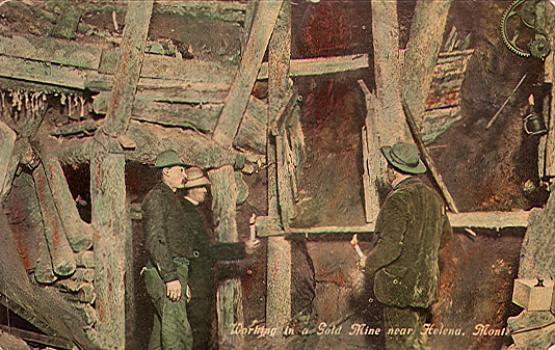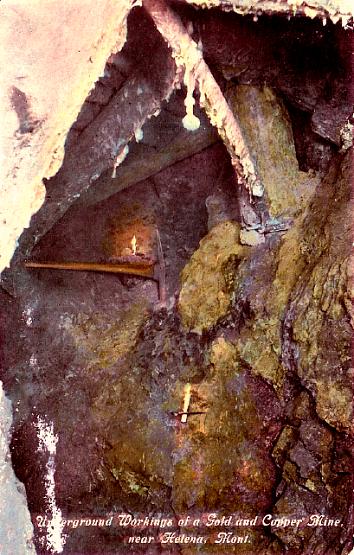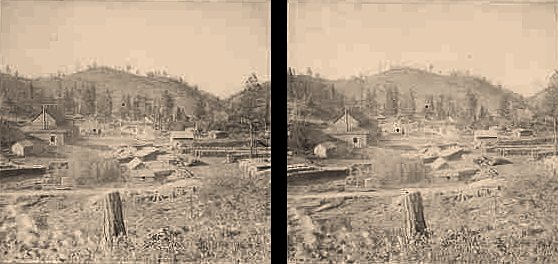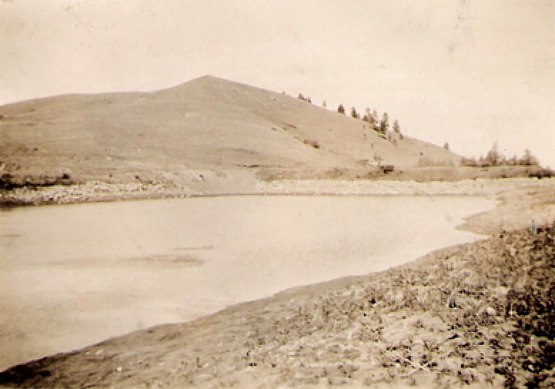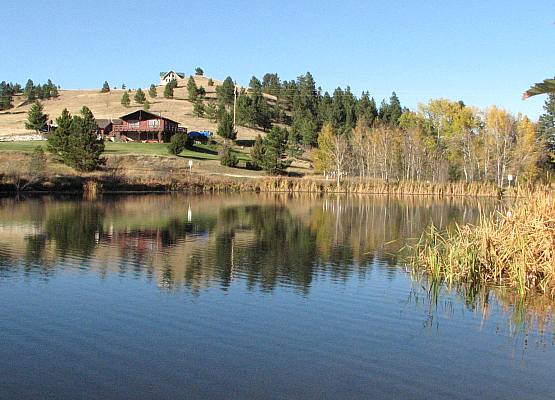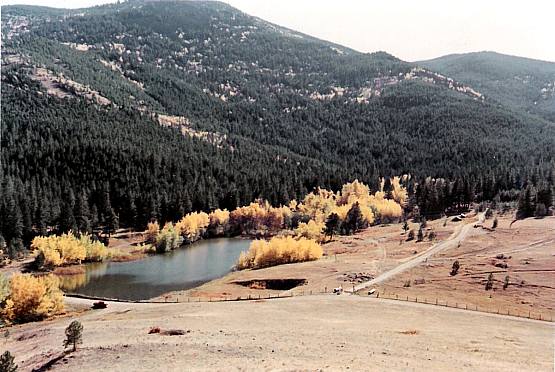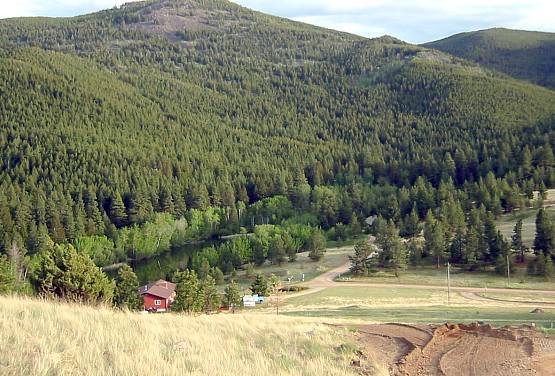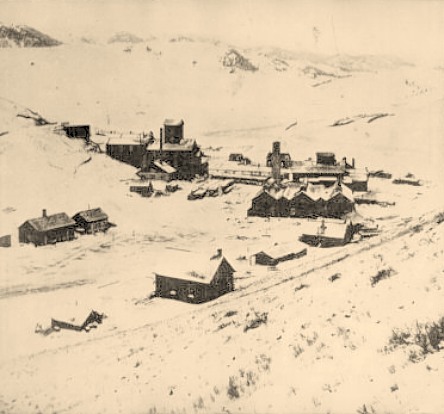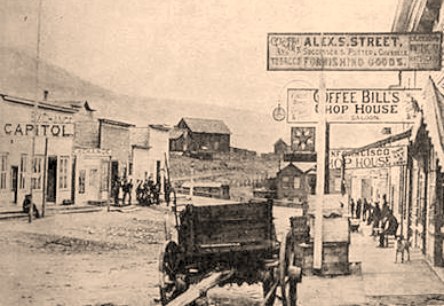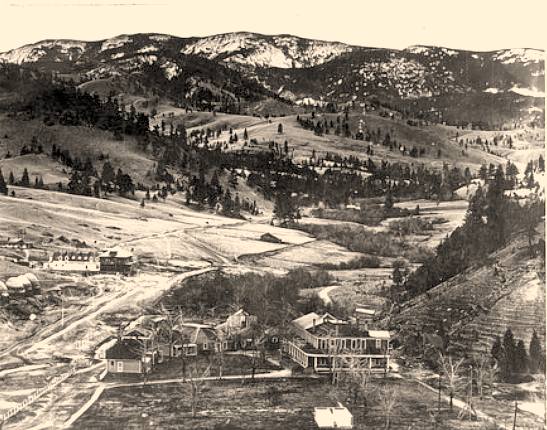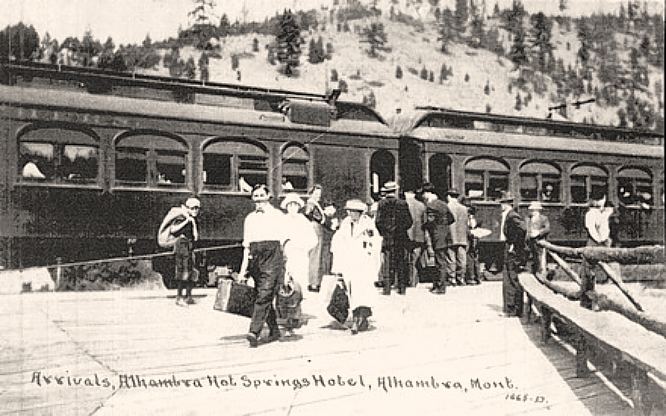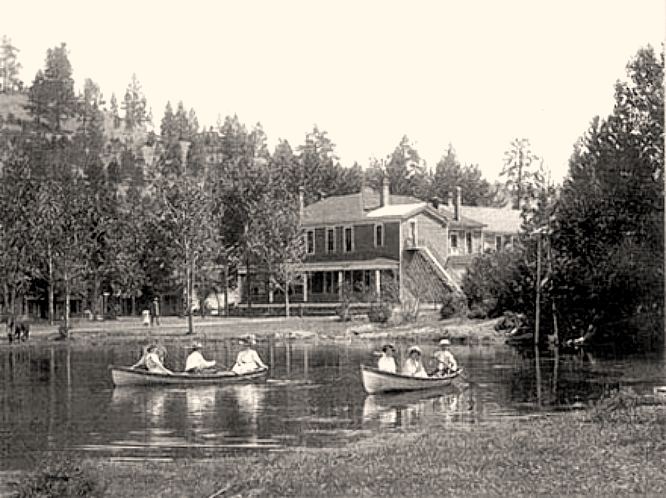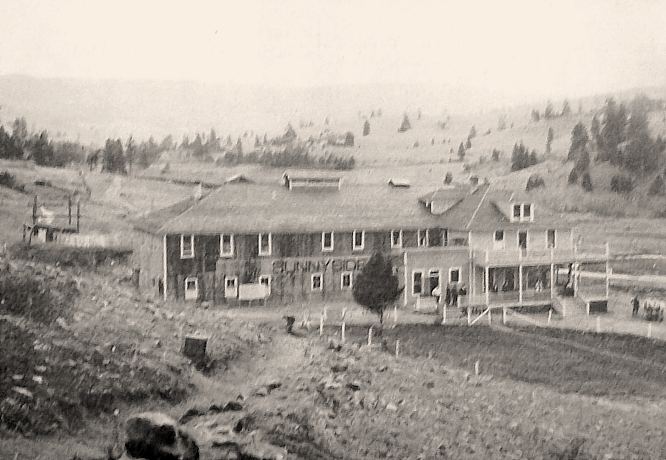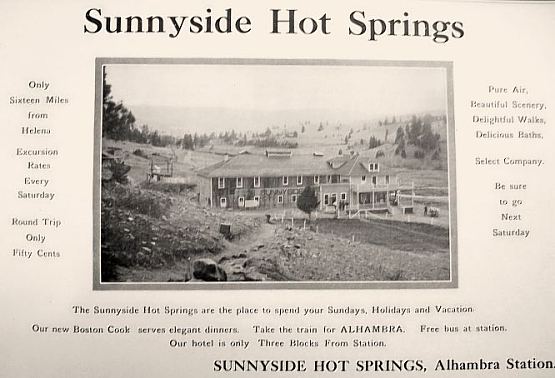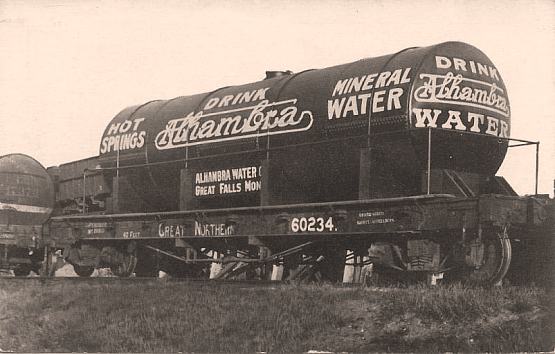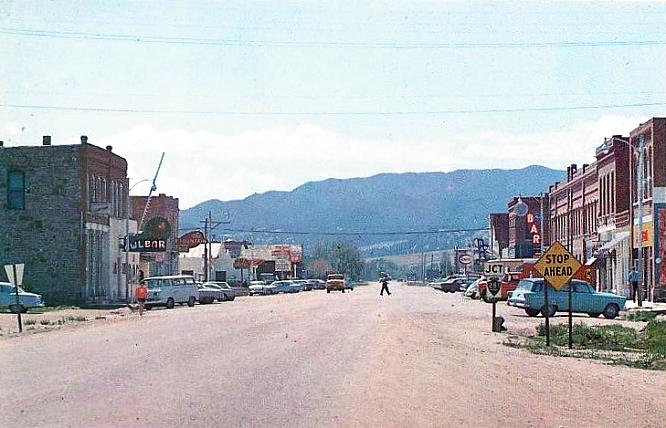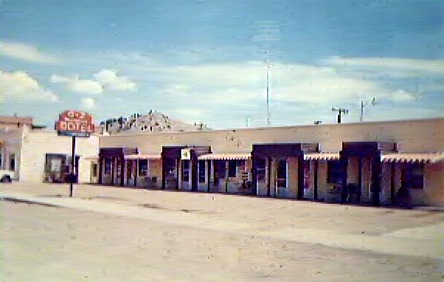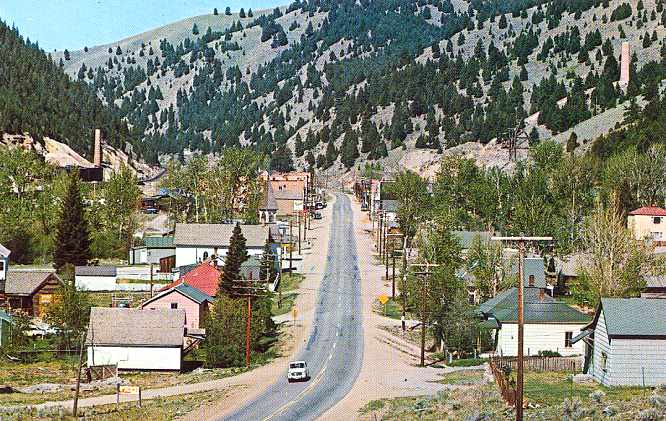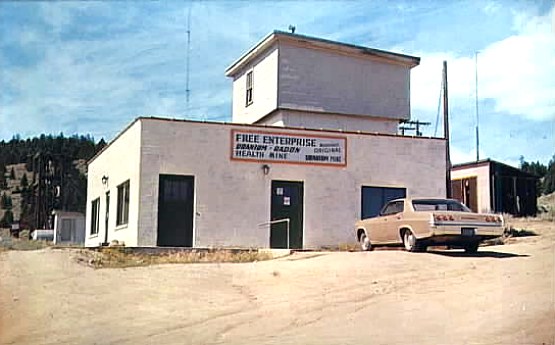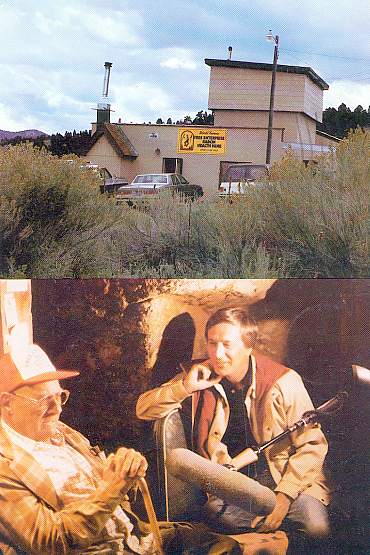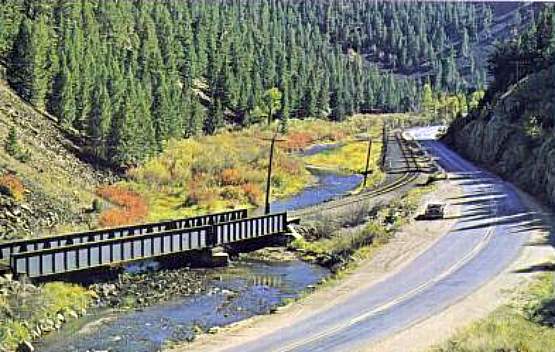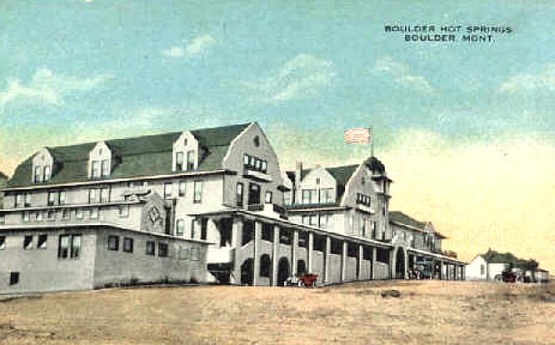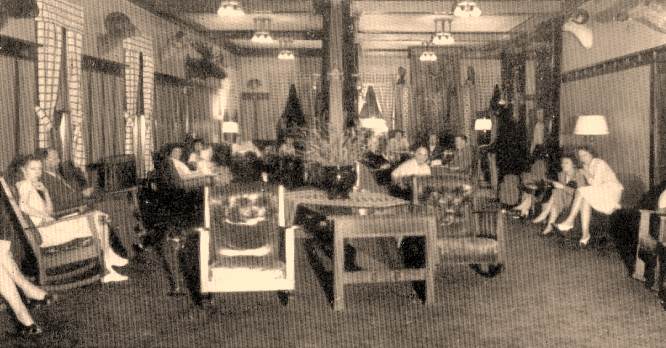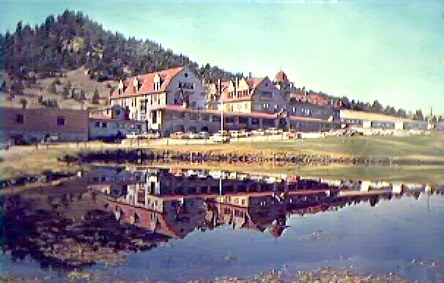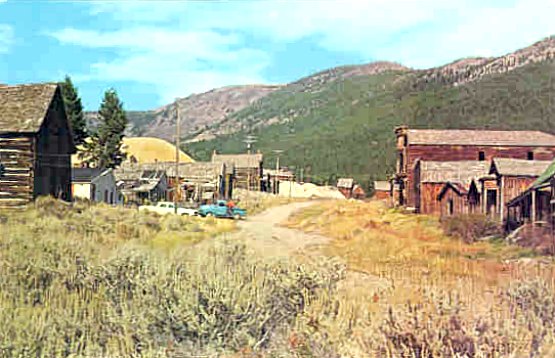|
TYPHOID TROUBLE
In 1908,
the Montana Board of Health addressed concerns over the spread
of disease, including typhoid, by these resorts. Both were piping
raw sewage into Prickly Pear Creek, and allowing seepage from
outhouses to contaminate groundwater. The contaminated water
was routinely pumped aboard Great Northern trains for use as
drinking water by passengers, some of whom would become ill
later and not know the cause.
From
the Montana Board of Health minutes, April 2 1908
COURTESY OF CHARLEEN SPALDING
The
Clancy matter was again taken up. Dr. Tuttle said he hardly
knew what to do in regard to it. The people over there don't
seem to realize
that the Board is trying to benefit them, and if ordered to
build water
tight closets they would only take their refuse and dump it
in a place where
it would be as harmful as it is now. Alhambra and Sunnyside
Springs should
have a septic tank or filter bed system, or else pipe the sewage
down the
river to a point suitable for a sewer farm. The are a great
many water
closets belonging to the Great Northern located right on the
bank of the
creek, and these should be put back about fifty feet. It would
aid
materially if they would dig deep enough so that they could
fill in with
about four feet of gravel and sand, so that the contents of
the closets
would be filtered before they could do any harm. Dr. Tuttle
also spoke of
treating
the infected wells with a solution of copper, and illustrated
the
advisability of so doing.
Dr. Treacy said the greatest danger came from the sanitariums.
Many sick guests were entertained there, causing conditions
that soon became
a menace to the people. A penalty should be provided for the
lack of action
on the part of the proprietors of these hotels, the same as
is provided for
the Spring Hill people.
Governor Norris asked how far typhoid fever germs could be carried
down a stream and Dr. Tuttle said as far as a river will flow
in twenty five
days. The Governor thought that if that was the case, and the
typhoid fever
germs existed in the streams coming from Clancy there would
be danger of
this city becoming infected.
Dr. Bruning said that the conditions at Clancy applied to all
the
rivers of the State, and whatever action was taken with regard
to Clancy
should also be taken with regard to the other places.
Dr. Knowles asked what suggestions Dr. Tuttle or Dr. Starz had
to
offer in regard to the matter. He said it was a great proposition
and one
that needed immediate attention. A sewer farm seems expensive,
but if it is
the only way to handle the matter they must have a sewer farm.
Dr. Starz said in regard to the out-houses, that some of the
waste
matter could be disinfected with sulphate of copper. That would
kill at
least a good deal of the infectious matter and the wells could
also be
treated in the same way. As to the effluent from the springs,
the only thing
to do was to force the owners of the springs to pipe the sewage
to some
place where it could be properly purified. The excreta and everything
from
all the sick people at Clancy goes into the stream, then the
water of that
stream is put directly in the big tank from which so many people
drink the
water. The tanks on the railroad cars are filled with this water,
and the
people who drink the water become sick after they leave Clancy,
without
knowing the reason. Something must be done. Since Clancy is
not an
incorporated town they haven't enough money to build a sewer
system, so the
only way is to prohibit them from dumping the sewage in the
stream until it
is purified and they can do this only by putting it on a sewer
farm.
Dr. Knowles suggested that the Secretary have a consultation
with
the owners of the two sanitariums. Tell them that it is the
desire of the
Board that they find some way to take care of this sewage -
that the Board
is willing to wait a reasonable length of time and then if they
have not
taken some steps the Board will have to find some other measures.
Dr. Bruning asked if there wasn't a definite law prohibiting
such
disposal of sewage and Galen read a portion of a law to that
effect.
Dr. Treacy said that the matter should be attended to at once,
not
only at Clancy but all over the State. Dr. Bruning moved that
the Secretary
of the Board be instructed to tell these people to provide some
means of
escape for the sewage.
Attorney General Galen offered us an amendment to that motion
that
the Secretary of the Board should recommend the measures to
be taken to
render the water safe. Let the Secretary investigate the matter
thoroughly
and determine the best and most effective means of handling
the sewage and
then in the directions to these people outline the plan he has
determined
upon.
To this Dr. Bruning added that all the water closets on the
bank
of the stream should be destroyed.
This motion was carried.
|


